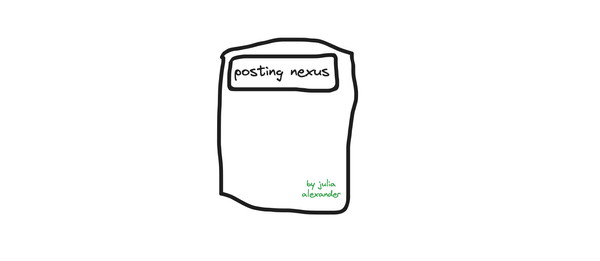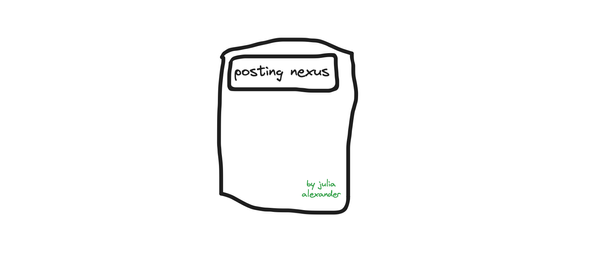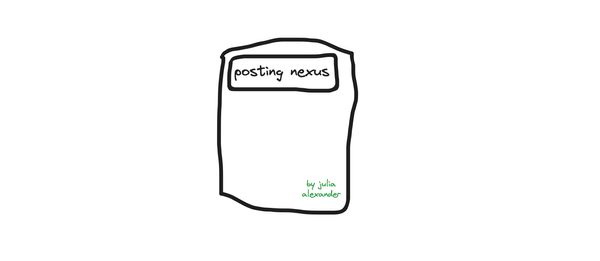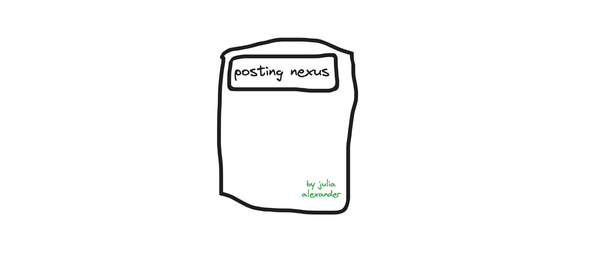Roblox's Attempt to Become the Next Great Global Mall
Roblox is entering adulthood, and as part of that is seeing an emphasis change from leisure to labor. Does this help ensure Roblox becomes the great global mall of tomorrow at a time when physical malls are all but gone?

A question I’ve asked many friends who work across gaming, entertainment, technology, and media is what the next “thing” is in the continued formidable transformation from physical to digital. You can point to digital sales of music and film in the early aughts as one of the most striking transformative memories for most people who wouldn’t consider themselves early adopters of new technology. It marked the ease of access, unlimited availability, and undeniable affordability that would come to define our expectations for consumption in the years ahead. Social media emerged in the mid-aughts, which brought access, availability, and affordability to social connection.
As revolutionary as these moments were, I refer to them as precursors. Entertainment and community, made all the easier with the arrival of the iPhones and Android phones, helped people get used to the idea that time spent online was just as valuable as time spent offline. Here’s where everything went to, well, shit: the minute that time spent online was directly tied to money that could be used offline, the internet changed from a place of leisure and fun to a place of labor and commitments.
Everyone having a device in their hand by the early 2010s completely reinvented our economy and how people made money: Uber, Yelp, YouTube. Even the mid-2010s, which saw services like Spotify and Netflix move into customers’ daily routine, came with the possibility of reaching an audience that couldn’t be reached previously (this was the democratization of access) for relatively cheap (affordability in the form of Garage Band and Soundcloud uploads), and to anyone with an internet connection (availability). Two simultaneous, world changing eureka moments happened at once: people were willing to create unlimited content and goods if they had a platform with an audience to sell those goods, and companies could use this labor at a much lower cost than manufacturing traditional goods or working with established talent to sell swaths of advertising. Undeniable, undervalued labor brought with it the current era of the internet that we exist in.
Every next technological advancement had the “unintended consequence,” as executives like to say, of further removing people from the world around them to focus on the world in their hands. From an evolutionary standpoint, the next step is a world where socializing, playing, and selling all exist within one platform. All that makes the difference between becoming Uber or YouTube is the network effect, and it’s here that a little game called Roblox has a clear advantage.
Leisure or Labor?
Roblox turned 18 two weeks ago. It has matured from a relatively obscure video game released in the same year as the Xbox 360 and PlayStation 3 to a game with 79 million daily active users (DAU) and a real-life economy sustaining the very culture of seventh graders globally. It took less than two decades for Roblox to completely change the world for kids everywhere and, as Roblox turns 18, I realized it’s the platform where kids will transform into adults themselves. It’s a world almost foreign to the one we know today. I came of age on MySpace and Twitter, where interactions were performative and superficial bonding collected like trading cards. Who was in your Top 8? How many followers did you have? How many strangers could you get to accept your friend request on Facebook? Roblox doesn’t solve for decaying intimacy, but it is a world that’s being built together rather than one that’s simply cohabited.
Ahead of Roblox’s 18th birthday, the company released its first social and economic report examining the game’s effects not just on pre-teens’ and teenagers’ social habits, but also the economic impact outside of the game. The report is full of fascinating details, but some key topline takeaways:
- The Developer Exchange Program equated to roughly 18,000 full-time jobs in the United States
- Nearly 40% of those wouldn’t have earned income elsewhere outside of the platform, and more than 55% of respondents didn’t develop for any other platform.
- Roblox paid out more than $800 million between June 30th 2023 and June 30th 2024, an increase of 18% compared to the same period a year prior
- The support of creators and their direct monetization in-game (cosmetic items, etc) and indirect monetization (YouTube videos, Twitch streams) delivered an estimated $1.2 billion in U.S. GDP between 2017 and 2023.
Roblox doesn’t need a puff piece about its success, and this certainly isn’t that. For every positive Roblox bullet point, there are dozens of negatives, including a recent feature from Bloomberg entitled “Roblox’s Pedophile Problem” What the above data points speak to is how often pre-teens, teenagers, and adults are spending time within Roblox, and how much they are increasingly spending within Roblox. Will Roblox, now entering adulthood alongside so much of its nearly 80 million daily player base, emerge as a platform history will see as part of the transitional moment into our next age?
First, let’s examine how the state of Roblox currently looks. My pal Matthew Ball has written at-length about Roblox as the first step toward what a potential metaverse may look like. Qualms about what the metaverse actually is and whether or not we’ll ever get there aside, Ball points out a few integral stats when it comes to Roblox as a black hole of culture amongst those coming of age now and those entering early adulthood. The game has “about 5x and 2.25x as many monthly players” as Minecraft and Fortnite respectively, and is averaging roughly the same level of engagement as “Instagram in Q4 2015 and Facebook in Q3 2009.” Lastly, and this is my favorite point, while players spend “close to six billion hours using Roblox” each month, this doesn’t include passive viewing time spent with the game on Twitch and YouTube where Roblox is one of its “five most watched games.”
Undeniable, undervalued labor brought with it the current era of the internet that we exist in.
Not everything is fine and dandy for the team behind Roblox, and these situations do give pause to Roblox’s next era. The most glaring, similar to the most glaring issues facing companies like OpenAI, is cost compared to revenues. Roblox isn’t profitable, and the company’s spending on R&D far outpaces its competitors. Certain costs that Roblox can’t control, as Ball points out, are also costs that they need to keep incurring in order to be the central platform of tomorrow. Creator payments (26% of all revenues) incentivize players to spend more time and create experiences or items for other players, which helps turn Roblox from a virtual world into a virtual economy for anyone who wants to build a livelihood in the game. App store fees (23%) are required to ensure that the largest player base possible has access to Roblox. Around 42% of global teens use their phone to play games each month, beating out the 34% who use a desktop or console, according to YouGov. It’s precisely because of these unavoidable profit hinderings that subtly turning Roblox into a marketplace where commerce is happening and encouraging more time spent within the app is crucial to the company’s next stage.
If I was to summarize the opportunities and issues Ball points out, it’s that Roblox is on the up and up because players like that they can hang out in the game as a place to socialize, can create content for their off-platform hobbies like YouTube and Twitch, and connect with a customer base that allows them to focus on their in-game careers, but the costs of being that exact type of experience is costing an arm-and-a-leg due to app store fees and paying creators to incentivize the needed network effect. Or, perhaps more succinctly, people want to use Roblox to make money and Roblox wants to ensure they get paid, but creating a creator-formed marketplace in a mobile-first structure isn’t generating the profits Roblox shareholders want.
A Place for My Friends
It’s always the shareholders. But I digress — if you’re Roblox executives, what do you do? You lean into being the great global mall of tomorrow. Consider that certain moves Roblox is making suggest the next wave of innovation and growth is less in the realm of Minecraft and more in the realm of Snapchat or WhatsApp. Roblox isn’t just a place to play, it’s a place to connect, to browse, to shop. For those interested in finding ways to monetize their time in the world, the more opportunities players have to use Roblox as a place of leisure in whatever form of leisure they want that to look like, the larger said customer network becomes.
It’s part of what makes the YouTube and Twitch points most interesting to me because it’s an example of monetization based on time spent with an activity and the expanding of captive audience — the best example of turning leisure and hobbyism into labor. These statistics insinuate that Roblox, similar to Instagram and YouTube before it, is no longer just a place to beat boredom or congregate, but a place to generate significant revenue for an active and growing base based on a global interest. As the number of players above the age of 13 also grows (40% to 58% over the last four years) so do opportunities and momentum to create livelihoods based on, within, and outside of a new world generating billions of eyeballs each day. It’s that enticing feature — the ability to live and create online in order to better social status and pay for necessities offline — that has defined our relationship to our most central platforms, and Roblox is on the precipice of joining that exclusive group.
A significant part of this move comes from a correlation to the number of physical spaces that have disappeared over the last 30-plus years. Young people especially are desperate for places to hang out, but as physical locations designed as heavens for boredom continue to collapse before our very eyes, the more interest there is for those recreated experiences in a place like Roblox. As I noted in a recent piece:
30% of U.S. adults report feeling lonely at least once a week, with 10% saying they experience it daily, according to the American Psychiatric Association. This increased amongst people in the ever important 18-34 year-old bracket, where feelings of daily loneliness sat at 30%. Nearly a quarter of adults polled said they were lonelier than pre-pandemic times and, while technology was viewed as mostly positive in “helping me form new relationships” (66%) or “helping me connect with other more frequently” (a whopping 75%), more than half of respondents didn’t know if those relationships were meaningful. Perhaps my favorite statistic that, for me, reinforces the decline in shared spaces as a direct result of the internet is that the number of malls in America has decreased by 98% between the ‘80s and 2020s.
It doesn’t take a psychic to see how this continues playing out. The less physical destinations there are for people to just exist in, the less drive there is for people to shop at local businesses, and the more important those shopping and trading experiences in the new malls, like Roblox and Fortnite, become. Accomplishing this goal, however, means enticing the next wave of creators and entrepreneurs to help build the “next great American mall” inside Roblox — all of which clearly seems to be the goal based on the narrative Roblox’s team is trying to present about time and dollars spent within the game each year.
Minecraft has steadily lost players interest, with more than 13 million players lost in the month of January 2024 alone. Fortnite consistently maintains around 230 million active players as of February 2024, down from its height in 2020 and 2021 during the pandemic, but not facing the same concerns as Minecraft. Does this mean that the true competition is between Roblox and Fortnite? It depends on how leisure is defined. Similar to how YouTube’s time spent on TV sets (now sitting with a TV viewership share of more than 10% in the US) is not necessarily comparable to time spent with Max because the demand for those types of content are not 1:1 even if the distribution format (TV sets) is, Roblox and Fortnite present two different options for different occasions. Fortnite is more competitive, glossier, and operates in a more action-oriented space. It is growing into more than just a game, but it still feels like a place to game rather than exist. Roblox, on the other hand, is built around cooperative building and socialization. It’s a place to lean back and hang out, something that Fortnite is trying to build but where Roblox has the advantage.
Fortnite offers competition and the thrill of a win that brings in players. This sits on top of meeting friends where friends are instead of trying to force friends into places they don’t want to hang. This is the definition of a network effect. Roblox has to offer something different. It offers the equivalent of a mall, and while malls are places to hang and build relationships they are also destinations for shopping. They are destinations to catch attention. Fortunately for both Roblox and Epic Games, it’s not an either or situation. There is a race to build up the dominant network to ensure network effects continue to retain players, but these worlds are only going to continue growing because we’ve all but cast away a preference for and reliance on physical hangout centers.
Roblox is entering its adult period. Perhaps nothing represents that nervous, exciting, anxiety-fueled feeling of moving from childhood to adulthood more than a change in focus from having fun with friends to learning how to make money with friends. It’s the American dream, after all.




